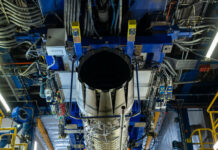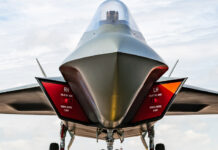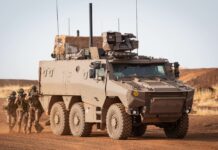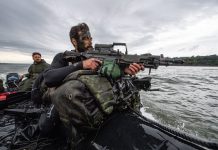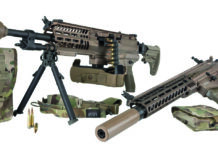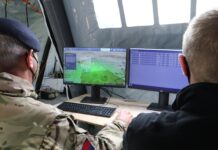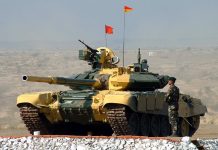Air forces can be priced out of existence by the escalating cost of state-of-the-art combat aircraft which is why many around the world are seeking affordable solutions that can undertake a sizeable proportion of their mission requirements at an acceptable cost.
The modern first-line combat aircraft is a highly sophisticated and highly capable piece of equipment. Unsurprisingly, this comes at a significant procurement cost. These aircraft are expensive to acquire, expensive to operate and expensive to maintain. Then you have to factor in the cost of the weapons that a combat aircraft of this sophistication is going to employ. These systems are characterised by their advanced capabilities and application of high technology, and capability never comes cheap.
Over the years, there have been numerous efforts to fight cost escalation in combat aircraft and the results have been less than satisfactory. In generation after generation of combat aircraft, procurement cost has risen and it has proven virtually impossible to turn back this tide of increasing cost. One way of avoiding unpleasant discussions about cost increases has been to counter this problem by stating the qualitative advantages of the modern combat aircraft, meaning that qualitative superiority in a far more efficient metric than quantitative superiority. In short, the message is that quality beats numbers.
FCAS and TEMPEST
The quality versus numbers argument is certainly a valid one, but there comes a point where you reach a situation where you simply do not have enough airframes to conduct the number of missions that you need to perform. It would appear that we have now reached or are reaching this point, because the next generation of combat aircraft, often called sixth generation combat aircraft, in Europe such as the Système de combat aérien du futur (SCAF)/Future Combat Air System (FCAS) being worked on by France, Germany and Spain are being defined as a ‘system of systems.’ This means that you will have multiple air vehicles capable of conducting multiple missions, with the objective that qualitative superiority decisively defeats numbers in air combat. Britain is heading up the other European sixth generation fighter programme, known as TEMPEST, with Italy and Sweden also participating. In addition, one should not forget the LOYAL WINGMAN programme being conducted by Boeing for the Royal Australian Air Force (RAAF). This is a UCAV designed to act as a force multiplier both independently and operating under the control of existing combat aircraft assets.
Combat aircraft technology marches ceaselessly onwards. SCAF/FCAS and TEMPEST are the European solutions to the sixth generation combat aircraft challenge. We can also expect sophisticated solutions from the US Air Force and the US Navy as they look to replace legacy combat aircraft and work towards successor technologies for a Joint Strike Fighter (JSF) replacement. Other aerospace powers such as China and Russia will be developing their sixth generation combat aircraft solutions as well, all of which indicates that future threats will be more challenging and complicated than ever before.
While the possibilities offered by future combat aircraft technologies are very exciting, we already know that it is logical to assume that these future aircraft will cost significantly more than those of the current generation. We have already reached a point where many air forces around the world have had to concede that they can no longer afford to acquire and operate state-of-the-art combat aircraft. There was a time during the Cold War where the superpowers were prepared to offer high performance combat aircraft to their allies/surrogates in the developing world for very little if any cash upfront. Those days are long gone. Today, air forces in the developing world are seeking affordable combat aircraft solutions that can undertake a sizeable proportion of their mission requirements at an acceptable procurement and sustainment cost.
The Tyranny of Numbers
What is becoming clear is that the number of air forces that are capable of acquiring and operating a serious number of advanced combat aircraft is declining. The trends are already visible and Belgium provides an excellent example of how European air forces are shrinking in terms of numbers. At the end of the 1970s, Belgium, along with Denmark, the Netherlands and Norway moved to acquire a successor to their Lockheed F-104 STARFIGHTER fleets. The F-16 was selected as the winner of the requirement in 1978 and Belgium ordered a first batch of 96 F-16A and 20 F-16B aircraft. The first aircraft, an F-16B, was delivered to the Belgian Air Force (BAF) on 29 January 1979. Deliveries of the first batch of 116 aircraft to Belgium was completed in May 1985. Prior to that, in February 1983, a second batch order for 44 F-16A/B BLOCK 15OCU was placed with the aircraft being delivered between 1987 and 1991.
As previously noted, the F-16A/B replaced the F-104 in Belgian service, with that fleet consisting of 101 F-104G and 12 TF-104G. The F-104 fleet retired in 1983 after a little over twenty years in Belgian service. BAF combat aircraft capabilities were much larger than the F-104 and its F-16 successor; they had also ordered 106 Dassault MIRAGE 5 fighters in three variants in 1968: fighter (5BA), reconnaissance (5BR) and operational conversion (5BD). There were plans to keep some of the MIRAGE 5 fleet in service into the 1990s, but with the end of the Cold War, the decision was taken to retire the MIRAGE.
With the end of the Cold War, Belgium like many other European nations sought to profit from the ‘peace dividend’ that was supposed to emerge from the reduced requirement for defence spending. This saw a single-service military structure adopted and the BAF became the Composante Air (Air Component). The F-16 fleet was reduced to 72 aircraft and 18 spare aircraft (84 F-16A and 6 F-16B). Subsequently, fleet numbers were reduced to 60 aircraft, then down to 54, with attrition reducing numbers further. In October 2018, Belgium announced the selection of its next generation combat aircraft and the replacement for the F-16, in the form of the Lockheed Martin F-35A Joint Strike Fighter (JSF) with 34 aircraft to be acquired.
At the end of the 1980s, Belgium was on course for a combat aircraft fleet of well over 200 aircraft, although it was envisaged that into the 1990s the fleet would decline in numbers and would be based on a single type, the F-16A/B, with all aircraft going through the Mid-Life Update (MLU) programme to extend service life and increase operational capabilities. The end of the Cold War changed these assumptions. Indeed, there was a point where Belgium was said to be considering ending the combat capability of the Composante Air! The JSF acquisition decision allowed Belgium to retain an air combat capability, but this was accompanied by a dramatic reduction in numbers.
Back in the 1970s when Belgium, Denmark, the Netherlands and Norway got together to replace the STARFIGHTER in what was then described as the ‘sale of the century,’ major numbers of aircraft were to be acquired. As previously stated, Belgium ordered a first batch of 116 F-16A/B, followed by a second batch of 44 aircraft. Denmark ordered a first batch of 46 F-16A and 12 F-16B, followed by a second batch of 12 aircraft in 1984 and later a batch of seven ex-US aircraft as attrition replacements. The Netherlands` first batch consisted of 80 F-16A and 22 F-16B aircraft, with the second batch order being for 97 F-16A and 14 F-16 B aircraft. Norway ordered 60 F-16A and 12 F-16B aircraft, with an additional purchase of two F-16B aircraft direct from the US production line.
All together, these four European air forces would go on to acquire a total of 514 F-16A/B aircraft from the end of the 1970s until the early 1990s. These four air forces have now all signed up for the JSF; Belgium for 34 F-35A, Denmark for 27 F-35A, the Netherlands for 46 F-35A and Norway for 52 F-35A. This provides a perfect example of how acquiring next generation combat aircraft leads to significant reductions in aircraft numbers. Between them, the four air forces will be acquiring only 159 F-35A JSF aircraft, when once they had acquired 514 F-16A/B.
Searching for Solutions
Air forces experiencing significant reductions in combat aircraft numbers as they look to acquire next generation combat aircraft is not a new phenomenon. In Europe, the rapid pace of technological change post-1945 saw a transition from piston-engined aircraft to jets. The problem was that generational change in jet-powered combat aircraft was so rapid in the 1950s and that it came together with significant cost increases. At this point, numbers were still an important consideration in force structures and it was becoming increasingly apparent that, at a certain point, air forces could be priced out of existence by the escalating cost of combat aircraft. The effort to counter this trend would see the development of a new category of affordable combat aircraft, often called lightweight fighters.
One can trace the roots of the lightweight fighter back to 1953 and a NATO competition for a lightweight combat aircraft, with a requirement issued in December 1953. It is rather extraordinary that even at this early stage, it was recognised that something had to be done about confronting cost escalation in combat aircraft. However, this requirement did not call for an ‘austere’ aircraft design. In fact, what they were looking for was a rather ambitious combat aircraft that just happened to be in a lightweight package. Another important consideration for these new lightweight fighter designs was that they would be able to accommodate capability growth over their service life. It was obvious that the pace of technological change in combat aircraft was so rapid that failing to allow for growth potential would doom a combat aircraft to rapid obsolescence.
If there was one combat aircraft design that would come to symbolise what the lightweight fighter concept was all about then that would be the Northrop F-5. What Northrop did was to develop a highly flexible family of designs under the N-156 designation to meet a number of different requirements that were emerging in the 1950s. Initially, their efforts were directed towards a US Navy light fighter requirement to equip escort carriers, but with the demise of the escort carrier that opportunity disappeared. Then came the breakthrough, the US Air Force had generated a requirement for a supersonic trainer to replace the existing T-33 and Northrop proposed the N-156T, they won the competition in June 1959 and that resulted in the T-38 TALON being adopted by the US Air Force, with over 1,000 aircraft manufactured before production ceased
in 1972.
The N-156 design team certainly manage to engineer the T-38 as a solution for an extended service life, the aircraft entered service in the early 1960s and is still in service today. The T-38 will be replaced by the T-7A RED HAWK, manufactured by Boeing in partnership with Saab, this design was selected by the US Air Force in September 2018 and it is intended to acquire 351 T-7A aircraft. There are ambitions for the T-7A aircraft beyond the training role, where it is one of a number of different solutions being suggested for future lightweight fighter requirements.
While Northrop had won the T-38 contract, they still had ambitions for the N-156 as a fighter design and continued to fund development of that variant, matters were helped by a contract won in 1958 for three prototype N-156F fighter aircraft to be evaluated as a possible candidate for a combat aircraft that could delivered to US client nations as military assistance. The N-156F was extremely successful in trials, but it was only when the US government generated the F-X requirement for a low-cost export combat aircraft that Northrop found their fighter programme. In 1962, the N-156F was selected to meet the F-X requirement as the F-5A, over the next ten years Northrop would go on to build 624 F-5A aircraft, 200 F-5B trainers and 86 RF-5A reconnaissance aircraft. Canadair built 240 CF-5 aircraft under license, while Spain built 70 NF-5 aircraft under license.
The was still more to come from the N-156 family, as Northrop sought to win a new US programme for an export fighter known as the International Fighter Aircraft (IFA). Here the aim was to offer US allies an affordable combat aircraft that would be competitive with the Soviet MiG-21 and this led to the development of the F-5E TIGER II. Still a lightweight fighter, the F-5E was larger than the F-5A, had more powerful engine, a radar and improved avionics, plus more weapon possibilities. Deliveries of the F-5E commenced in 1973 and Northrop would go on to build 792 F-5E, 146 F-5F trainers and 12 RF-5E reconnaissance aircraft. Switzerland would acquire 98 F-5E aircraft, the majority assembled at Emmen in Switzerland, and 12 Northrop-produced F-5F (currently Switzerland has 20 F-5E and 5 F-5F aircraft in service). The Aerospace Industrial Development Corporation in Taiwan would build 242 F-5E and 66 F-5F aircraft under license, while Korean Air manufactured 48 F-5E and 20 F-5F aircraft under license for the Republic of Korea Air Force (ROKAF).
There could have been a third generation of Northrop lightweight fighters. At one point, the US government was looking for an export fighter as they were concerned over weapons proliferation and unwilling to sell the F-16 except to NATO and other major allies. This created an opening for an export fighter that Northrop were hoping to fill with their F-20 design. Unfortunately for Northrop, the Reagan administration was prepared to sanction widespread F-16 exports and that marked the end of the F-20.
Past and Present
Another path to obtaining a light combat aircraft capability is to use a training platform for operational tasks. As western countries entered the counter-insurgency era in the 1950s, it was found that training aircraft, even carrying a light bomb load, had a useful role to play in providing air support to ground forces. As jet trainer came to the fore in the 1950s, they added a new factor to light attack possibilities. For example, the US Air Force had taken the Cessna T-37 into service as a trainer. By the 1960s, the aircraft had been upgraded and reworked into a dedicated light attack aircraft as the A-37B DRAGONFLY.
European industry was able to support a wide range of jet trainer designs many of which would go on to develop a more than respectable combat capability. France had the Fouga MAGISTER; 900 of these were built in the 1950s and the type was widely exported, with the aircraft being used in combat by Cambodia, Israel and Morocco amongst others. The successor to the MAGISTER was the Dasault/Dornier ALPHA JET, which was built to meet the advanced jet trainer needs of France and Germany. A combat variant was developed and this was adopted by Egypt and Nigeria to name but two.
Britain introduced the JET PROVOST in the mid-1950s and in the 1960s went on to introduce a dedicated attack variant in the form of the STRIKEMASTER, which saw operational service in the Middle East and South America. Also in Britain, W.E.W Petter, the British aircraft designer, responsible for aircraft such as the CANBERRA bomber, had come to the conclusion that lightweight combat aircraft were the way forward and had gone on to develop such a system in the form of the Folland GNAT aircraft. A trainer version of the GNAT was adopted by the RAF, but the aircraft was exported with considerable success as a fighter, with India as the largest customer. Hindustan Aeronautics (HAL) built the aircraft under license and in the 1970s produced an improved version of the aircraft as the AJEET.
The Aermacchi (now Leonardo) MB-326 was a highly successful jet trainer that was widely exported and which spawned dedicated light attack variants, including a single-seat version. The aircraft was succeeded by the MB-339 at the end of the 1970s and this aircraft also saw combat use by both Argentina and Eritrea. The latest generation advanced jet trainer from Leonardo is the M-346 MASTER and here the aircraft is capable of offering weapon training capabilities, as well there being a dedicated attack variant.
In the Soviet era, the majority of advanced jet trainers utilised by the Warsaw Pact nations and their export customers were the product of Aero Vodochody in what was then Czechoslovakia. The first jet trainer to enter service was the L-29 DELPHIN in the 1960s; this was followed by the L-39 ALBATROS in the 1970s, with both aircraft produced in substantial numbers. With the fall of the Soviet bloc and the emergence of an independent Czech Republic, Aero Vodochody further developed the L-39 initially into the L-59, which was acquired by Egypt and Tunisia, and then into the L-159 Advanced Light Combat Aircraft (ALCA) that was acquired by the Czech Air Force.
Currently, Aero Vodochody is offering the L-39NG as an advanced jet trainer. This is based on the original L-39 and features advanced avionics and a modern high performance engine. The aircraft performs all classic training missions and is also equipped for combat operations. One of the first customers for the L-39NG was the Senegal Air Force, who will use the aircraft for light attack and counter-insurgency missions once the contract details are resolved. Other customers include Vietnam who has purchased 12 L-39NG.
In the 1960s, the RAF generated an operational requirement for a successor to the Folland GNAT as an advanced jet trainer; the HAWK aircraft was selected to meet the requirement and in 1972 the RAF placed an order for 175 HAWK T.1 aircraft. In the 1980s, the RAF converted a large number of aircraft to the T.1A configuration to provide a lightweight day fighter capability with a couple of AIM-9L SIDEWINDER missiles and a 30mm cannon pod. Initial export aircraft were the 50 series followed by the 60 series, the latter aircraft providing the basis for the US Navy GOSHAWK trainer. Then came the HAWK 100, offering more performance in training and combat missions, and there was also the HAWK 200 single-seat fighter derivative. The HAWK has been further developed with the RAF acquiring new aircraft and more export contracts obtained, most notably from India.
A light attack aircraft need not be jet-powered. Turboprop trainers such as those from Embraer and Pilatus are perfectly capable of conducting weapon training and light attack missions. Indeed, the original Embraer EMB 312 TUCANO was designed with a counter-insurgency mission capability from the start. The latest TUCANO variant, the A-29 SUPER TUCANO has been sold in Africa, Asia and the Middle East, and was selected by the US Air Force to meet the Light Air Support (LAS) requirement to provide the Afghan Air Force with 20 light attack aircraft.
Futures
The next generation of combat aircraft will be more sophisticated than ever before, more expensive than ever before and air forces will be able to afford fewer of them than ever before! Not every mission requires a highly sophisticated solution and this creates an opening for more cost effective alternatives. Then, outside of the major air forces, there are those whose ambitions for airspace surveillance, light attack and counter-insurgency capabilities will also have to be met by more affordable alternatives.
Some might suggest that ground attack missions could be met by attack helicopters – a fair point but these days, an advanced attack helicopter is a very expensive proposition to acquire and operate. Another future possibility might be a UCAV-based solution, although complications over effective target identification, designation and engagement would cause concern.
There still seems to be a light combat role for jet trainers and turboprop trainers. From the operator perspective, there are also plenty of choices in terms of suitable aircraft to be acquired. In the context of advanced jet trainers, this was a market sector that Europe dominated. For many years, now matters are not so clear. Competing designs exist from Russia and China, while new competitors such as Korea are successfully entering the scene.
Lastly, we come to the question of whether there is a market for true light combat aircraft, what one might describe as an F-5E/F for the current era. This is a difficult question. Light combat aircraft such as the Sino-Pakistani JF-17 or the Indian TEJAS are potentially being built in numbers, but will they define an era as the F-5 did? Will we see aircraft such as the Korean KF-21, which Indonesia has invested in, and a future Turkish TF-X fighter, becoming export successes? It might be that these appear far more sophisticated in conception heading for F-16 replacement territory rather than F-5 capabilities, thus limiting their chances of a mass market. Certainly, there still appears to be a space for a true multi-mission light combat aircraft. What that aircraft might actually be is yet to be determined though.
This article originally appeared in the July issue of European Security & Defence. Click here to download the full issue in PDF format.





